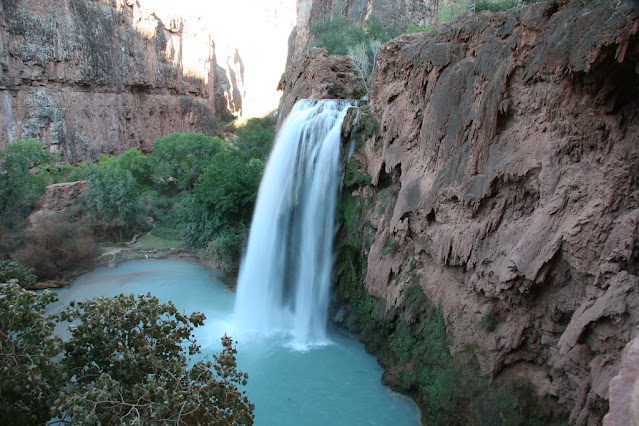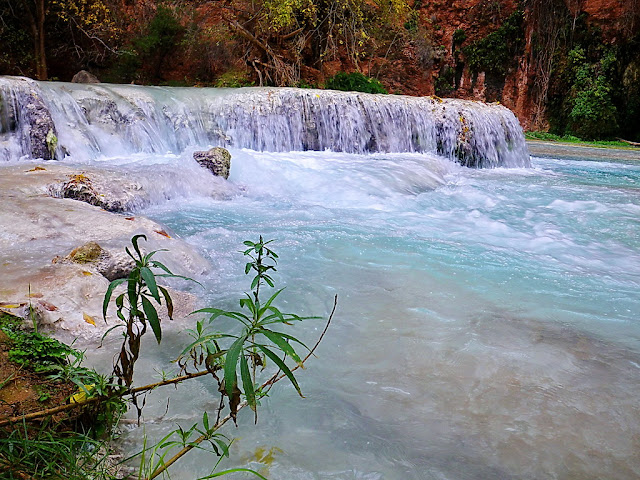The Beauty of Havasu Falls – Grand Canyon National Park
Havasu Falls (Havasupai: Havasuw Hagjahgeevma) are scenic waterfalls on the Havasu River.
This waterfall is located in the Grand Canyon National Park, Arizona, United States, which is within the territory of the Havasupai tribe.
If you take a trip to Grand Canyon National Park, you will definitely meet Havasu Falls Waterfall.
You can reach this beautiful waterfall by walking to the small village of Supai.
After arriving at Supai Village, you can also continue by riding a horse to the waterfall, so you won't be too tired. Even so, your tiredness will be cured when you arrive at this beautiful waterfall.
Access To Reach The Waterfall Area
To get to the center of the waterfall, visitors have to walk to the post camp which is about 10 km from the ticket counter. After that, visitors still have to climb a fairly high cliff, then visitors can enjoy the beauty of Havasu waterfall
Havasu Falls which has bluish water is flanked by a barren red gorge and green trees that fall directly to the ground to form a pool.
Havasu Falls that flows in the barren land of the Grand Canyon is also considered holy water by local tribal people.
Apart from Havasu Falls, you can find four other waterfalls around this waterfall, namely Supai Falls, Navajo Falls, Mooney Falls and Beaver Falls.
However, among other waterfalls along Havasu Creek, Havasu Falls Falls is the more famous and most visited by tourists.
The bluish-green waters of the Havasu River that make up Havasu Falls fall from about 27-30 meters high from a vertical cliff into a series of plunge pools.
The high concentration of calcium carbonate in the water creates a bright blue-green color and forms the natural travertine dams that occur in many places near the falls.
The soft form and texture of the calcium carbonate content is constantly being deposited from streams throughout the lower gorge. Tufa slowly recrystallizes into travertine, the calcium carbonate structure is more durable, and ancient travertine remains have become riverbeds for the past thousands of years.
Meanwhile, modern Travertine is stored in response to water chemistry and is eroded by flooding.
Modern sites of travertine deposition occur mostly between the supai and the confluence of the Havasu and American Colorado rivers.
Due to the effects of the flash flood, the appearance of Havasu Falls and its pools has changed many times.
Before the flood of 1910, the water flowed in almost continuous sheets, and was known as the Bridal Veil Falls. The status of the watercourse first appeared in 1910, and has changed several times since.
The water currently flows as a single stream. In the past, there were sometimes multiple streams, or continuous streams to the edge. (nps.gov)
Behind the beauty of the blue Havasu waterfall, it turns out that at any time it can turn red. This was due to the presence of calcium carbonate (CaCo3) deposits and the combination of red limestone on the walls of the waterfall/canyon formed by tuff deposits.
Best Time To Visit Havasu Falls
The best time to visit Havasu Falls is in late autumn, winter or early spring. During the hot summer months, plan to hike as early as possible, to escape the heat. Bring plenty of water if you intend to hike, as no water is available, and the trail can be dry and dusty. Nevertheless, Havasu Falls is still beautiful today and is visited by many tourists.


No comments:
Post a Comment